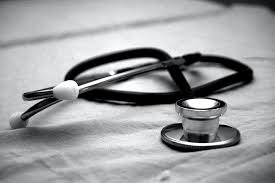If you're sick, you make an appointment to see a doctor, right? Well, if you're in the United States and you're one of the many people who are uninsured or underinsured, getting health care isn't that simple. The health system can be tremendously expensive for those who are uninsured or underinsured. So how do you see a doctor without health insurance? Fortunately, there are some options available. However, they vary based on where you live, the type of treatment you need, and other factors specific to your circumstances.
How to See a Doctor Without Insurance
First of all, people should not avoid going to the doctor strictly because of the cost. It could cost your health and your wallet more in the future if you put off getting the care you need. Even if you don't have health insurance, you can see a doctor and receive treatment such as preventive care, acute care, urgent care, or emergency care. The hard part is finding services that are affordable. The best places to start are community health clinics, outpatient clinics, and direct care providers.
Community health clinics
There are likely to be community health clinics available in your area. These may be free or low cost to you. These clinics provide some of people's most needed care, like preventive exams and immunizations, without the high price of a direct primary care provider or insurance requirements. Many of these allow people to pay on a "sliding scale" based on their income, or offer free services. Try searching your area through the directory at freeclinics.com.
Outpatient clinics
Outpatient clinics are also available for more routine issues and may accept cash payments if you don't have insurance. You can see a doctor at an outpatient clinic for minor problems and you will be charged for the visit. However, not all are as cheap as others, so be sure to ask if the costs are up front. Some walk-in clinics offer care at low or reduced rates, while others can help you apply for free or low-cost health insurance, like Medicaid.
Direct Care Providers
Even if you don't have health insurance, you may still be able to see a health care provider, but there may be a cost. There are clinics that serve the uninsured, known as cash-only clinics, concierge clinics, or direct care providers. You may want to shop around to find a doctor you like and also fit your budget.
Hospital emergency room
If you have an immediate medical emergency, you should go to a hospital emergency room or call 911. Emergency medical service providers, such as hospitals, generally cannot refuse care in a medical emergency because you don't have health insurance. Let staff know you don't have insurance, as you may be able to plan payment terms over time with the billing department or get help applying for emergency Medicaid or other insurance. However, emergency care is the most expensive type of care. Use it only if it's a true emergency to avoid incurring expensive bills. In non-emergency situations, urgent care is often a more affordable option.
Urgent care centers
Urgent care centers are available for immediate emergencies and other urgent medical needs and can often be paid directly by the patient. This can end up being a cheaper alternative to a visit to the hospital, as long as the clinic can take care of your medical needs. These centers are like an outpatient clinic for more serious problems, such as broken bones, sprains, and wounds that require stitches.
How much does it cost to see a doctor without having insurance?
Unfortunately, if you don't have insurance, getting medical care can be quite expensive. It's hard to determine how expensive it is, as it varies depending on the medical issue you have, the type of provider you're seeing, and where you live. While debt.org mentions that a visit to the doctor costs between $70 and $250, this number increases if you need additional tests or medications. It can be astronomical if you need to visit the emergency room. The costs of various accidents and illnesses can add up quickly when billable items such as blood tests, X-rays and ambulance rides are included. Many people end up being surprised to receive large bills after a medical event.
The average cost of diagnostic tests can also vary quite a bit depending on your region and where you went. According to the Healthcare Bluebook, a database that compiles fees, a CBC lab test can range from $15 to $100, a chest X-ray can range from $40 to $250, and a fetal ultrasound can cost from $89 to $480. As you can see, it can be a real challenge to estimate how much medical care might cost if you need it.
The amount you'll pay may also depend on where you receive care. Some clinics may offer discounts or allow you to pay on a sliding scale based on your income. Community clinics can be cheaper than going to a direct care provider, and urgent care clinics can be less expensive than a trip to the emergency room. Ultimately, what you'll pay varies greatly depending on your specific health problem and where you go for treatment. Before you visit a clinic, you can compare prices or find out if you can get the treatment you need somewhere cheaper.
It is important to note that there are many people who are not insured and do not have to be. You can visit healthcare.gov or contact your local department of social services to find out if you qualify for free or low-cost health insurance.


No comments yet